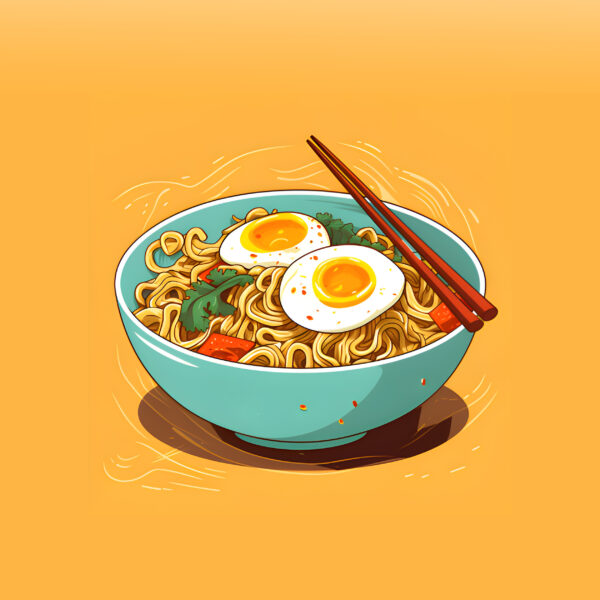Professor Arnold Jin has a habit of feeding his students. He began teaching at the Center for Asian American Studies in the fall of 2020, during the thick of the pandemic. At the end of the semester, he threw a small party for his students, safely socially distanced, and catered food from a few local chefs. Several students asked timidly to take the leftovers, and Jin obliged.
The next year Jin put on another party and found more students excited to take leftovers home. Later he received several emails from his students thanking him. Students cited unexpected bills and overshot budgets, and expressed gratitude for the leftovers that carried them through to the next week.
Jin made it a part of his routine to bring a few cases of instant ramen with him to class every few weeks for whoever needed it. One week a student came to him and mentioned his struggle with food insecurity.
“(Students’ stories) hit me really close to home,” Jin says. “I’ve been hungry, you know? Although it was more … due to my own errors. But I know what it feels like.”
This sparked an idea, which Jin brought to Mohit Mehta, the center’s assistant director.
The center started a food pantry stocked primarily with Asian staples such as instant ramen, packets of seaweed and microwaveable curry. The food pantry is open to all graduate and undergraduate students to combat food insecurity and the rising cost of living in Austin. The pantry also aims to give students a taste of home and access to the easy comfort foods that they grew up eating.
A month after Jin brought the idea to Mehta, the center opened the pantry. The first round of donations came from one of Jin’s employers: Minamoto Foods. Two of Jin’s supervisors at Minamoto were fellow UT grads and from the Alief neighborhood in Houston — a suburb with Vietnamese and Chinese restaurants scattered throughout. The area had a median household income of $42,921 in 2019, according to the numbers from the city of Houston. Austin comparatively had a median household income of $71,576 in 2019, according to Data USA.
“Knowing how much food costs have increased, (my bosses) were like: ‘Let’s just donate some stuff. We’ll do some instant noodles, instant rice. We’ll just choose some stuff that’s really easy to do,’” Jin says.
After the first donation, other companies and individuals have kept the pantry stocked with grab-and-go Asian staples. Cans of Spam, microwaveable rice and Cup Noodles line the shelves. The food pantry focuses on ready-to-eat foods to take into account college students’ schedules and combat food waste. Around 54.3% of college students reported cooking sometimes or never, with living on versus off campus and receiving financial aid being contributing factors, according to a study done at the University of North Carolina at Chapel Hill.
“A lot of students don’t know how to cook,” Jin says. “They don’t really know how to do any kind of meal prepping. (They) don’t really know how to be more efficient with their time.”
Beyond making meal prep easier, these foods are also familiar and comforting to many students who visit the pantry.
“Our idea is to provide culturally congruent foods that a lot of Asian and Asian American students are looking for,” Mehta says. “This is not to be cultural or exotic, but because these are sort of comfort foods or foods that are daily stays in people’s families.”
The food pantry also hopes to bring more attention to food insecurity in certain populations of students that may get overlooked.
“(Food insecurity) is not unique to Asian Americans,” Jin says. “But I think there is this perception that Asian Americans are wealthy and Asian Americans are successful. A lot of it comes down to the model minority stereotype. But because of these stereotypes, … they don’t think that Asian Americans represent a demographic of need.”
Another population the food pantry hopes to help is Asian international students. For the 2022-23 school year, 6,189 international students were enrolled at UT. Nearly 2,700 of these students were from China and India alone. Many international students do not qualify for work or financial aid, and that disqualification can impact their ability to buy groceries.
The center hopes to receive more donations for future semesters as well as to partner with other food pantries across campus to highlight invisible food insecurity in students.
“There’s no other space on campus that necessarily offers ‘ethnic foods’ or foods that are culturally congruent with families,” Mehta says. “So I think those are big motivators (for us) to continue to serve really all students at UT, but in particular Asian American students.”



